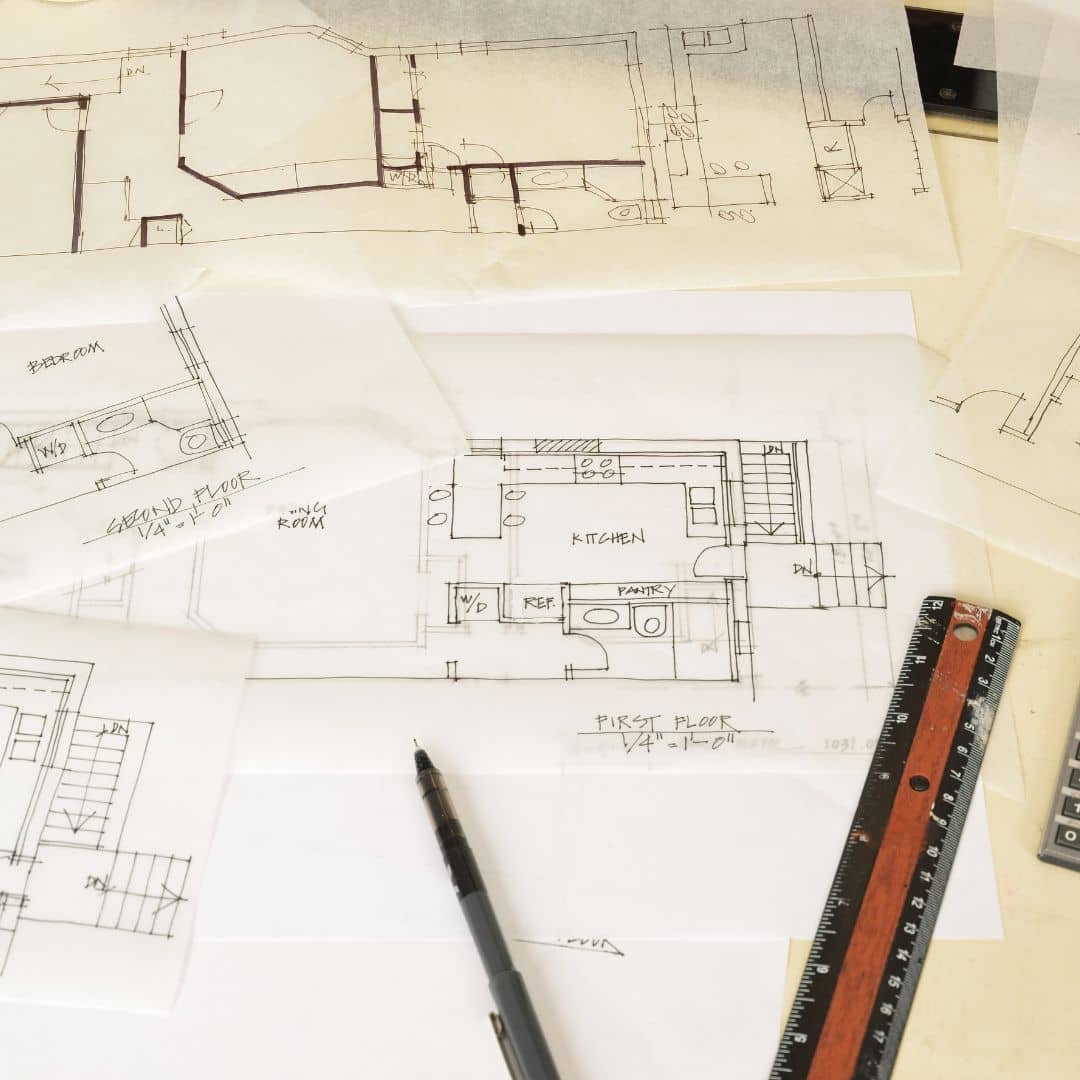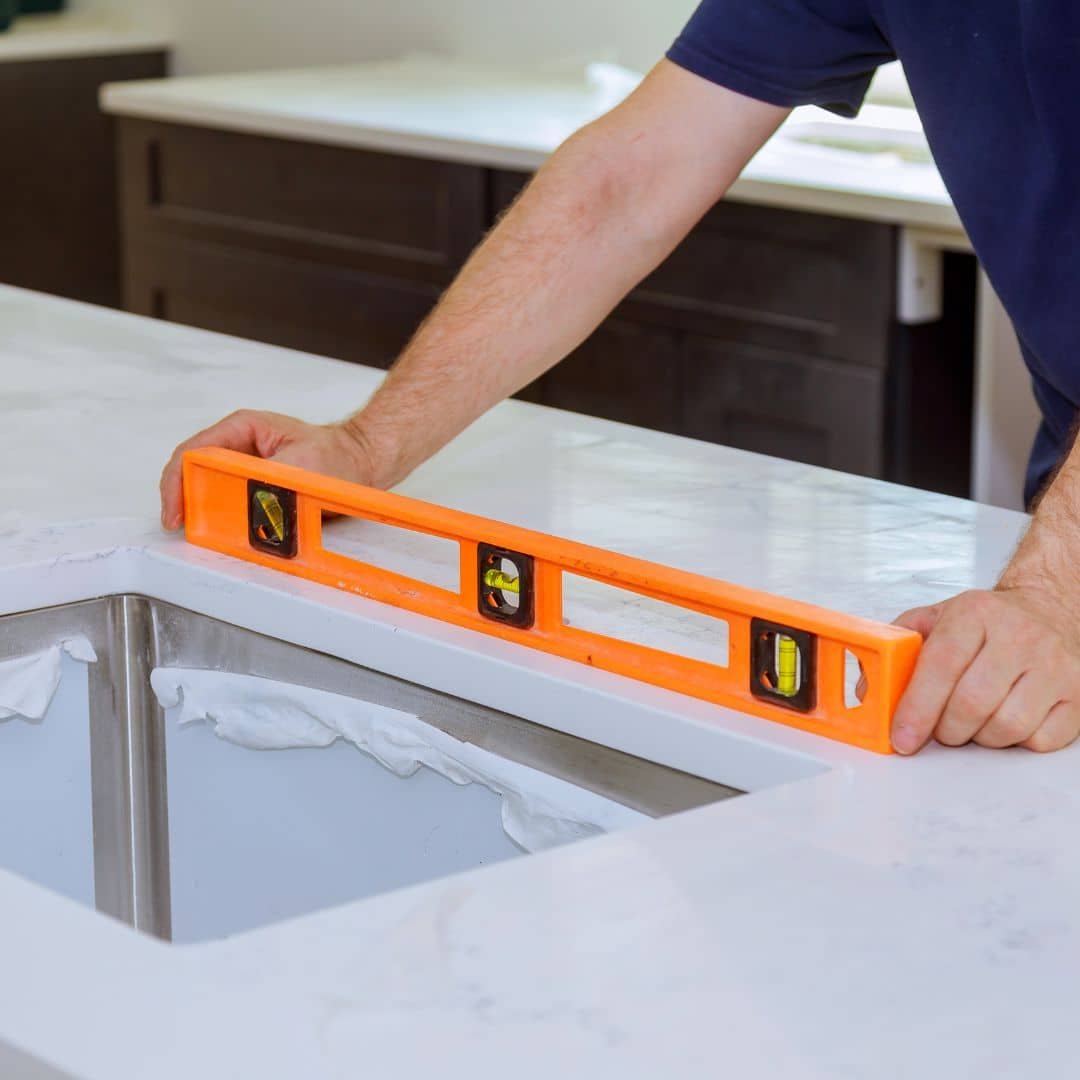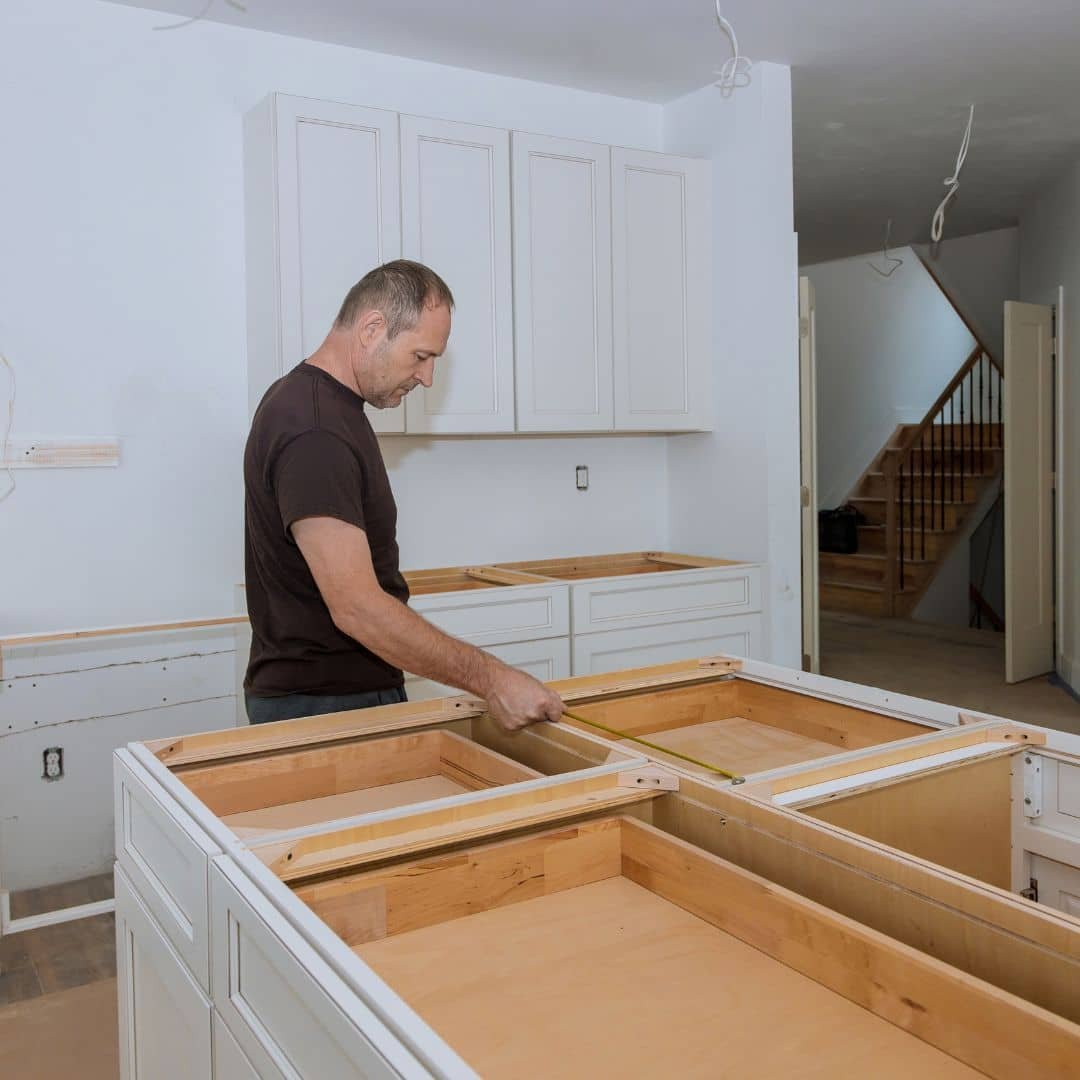What is the process for measuring countertops and cabinets?
Introduction
When remodeling your kitchen or developing a better idea of the floor plan for your home, a crucial step is measuring and planning out your countertops and cabinets. This post will show you how to measure both, including what tools are needed and how to split up the process into manageable sections.
I Want To Design A Kitchen: Where Do I Begin?
What Tools Are Needed to Measure a Countertop?
Before you measure for your countertops, cabinets, or other kitchen/bathroom fixtures:
Make sure you have a tape measure and/or a laser measure available. These will be used to make all the measurements required for your project.
You may also want to bring along some paper, a pen, and/or a laptop or iPad with a calculator app installed (this will come in handy if you are making changes during the design phase).
A camera or camera phone can be very useful in taking pictures of existing features around your home, which may help inform your design choices down the road. Photos also come in handy if you can discern the dimensions of an item in your photo that you may have previously failed to measure.
How to Measure a Countertop - Areas to Consider
When measuring a countertop, you must take into account the following:
Countertop Area
Sink Area
All Appliance Areas
Countertop Edges
Countertop Depth, Countertop Height, and Width (aka "D x L x W")
Sketch the Countertop Area
Next, you will need to sketch the countertop area. If you measure for cabinets and countertops separately, ensure that the cabinet measurements are not included in your countertop sketch. You can always use a second sheet of paper to draw a separate sketch of the cabinet area if needed.
You should include all other fixtures in this rough sketch: sinks, faucets, ovens or cooktops, microwaves, etc. Note any doors or windows that may be near or part of your kitchen design!
Split the countertop drawing into Sections
You can draw the countertop and cabinet sections in any way you like, but it's best to ensure that each section is square and equal in length, width, height, and area.
If you're using paper for your drawings, first sketch a rectangle to guide how big you want your cabinet or countertop to be. Then instead of drawing one large rectangle for your whole kitchen remodel project, cut this big rectangle into smaller pieces. Separating the areas will help keep things organized when building your cabinets or installing new countertops later down the road.
Take the physical measurements of the countertop
Measure the length.
Measure the height.
Measure the depth.
Measure the width.
These individual measurements will be vital when you're determining how much countertop material you need for your project. Information like this will make it possible to use an entire sheet of marble, granite, or whatever other material you prefer in its entirety instead of breaking it down into smaller pieces (which may cost more).
Determine the Countertop Dimensions Needed
Measuring countertops is a reasonably straightforward process. Once you've determined the exact dimensions of the space where you intend to install your countertop, it's time to measure what will be sitting on top of your new countertop.
The first step in this process is measuring the area of the wall that will be visible after installation is complete. Measure from each side and mark those measurements down so you know how much room there is for cabinets, appliances, and other objects that might protrude from the wall into this space.
Note: This measurement should include any existing cabinets or appliances extending above or below your intended surface area (for example, if an oven sits beneath part of your cabinets).
Next are two measurements related to sinks: one for standard sinks and one for deep sinks (often used as prep sinks). Measure how far off-center each sink will sit from the center line; this number allows us so size upholstered benches or other pieces of furniture appropriately before deciding which color scheme would look best with your new material choice.
Add up the Sections
Once you're done measuring all the sections, add them to get your total measurements. Then repeat the process on the second piece of paper and compare the two sets of numbers to confirm that they're consistent. If not, make any necessary adjustments before making your final cuts.
Repeat the process a second time and confirm your measurements
In the second pass, you should verify that you have the correct measurements. Ensure each measurement (length, width, and height) adds to the correct number.
If this is your first time measuring for countertops or cabinets, getting a little confused about how everything works is not uncommon. If this happens to be your case, don't worry: keep working through these steps until you get it right!
What tools are needed to Measure Kitchen Cabinets?
To begin measuring for kitchen cabinets, you will need to lay out a tape measure and pen or pencil. You can also use a laser measuring device if you have one available. If not, don't worry; there are other ways to get the job done!
Next, gather together your laptop or iPad (to take photos), calculator, camera/phone/iPad (to document your work), step stool or ladder (to reach higher places), and level (for making sure everything is straight).
How to Measure Kitchen Cabinets
Draw the space you will be measuring. This should include any areas you want to have in your new kitchen design, such as an island or peninsula, and any fixtures (sinks and faucets) that need to be included in the plan.
Measure horizontal room dimensions by estimating from wall to wall and marking on your sketch with a pencil. For example, if there's a window between two cabinets and you want it included in your design, measure from one side of the window to another and mark this measurement on your drawing as well. Mark all other horizontal measurements similarly—for example: "Cabinet 1: 12" × 36"; Cabinet 2: 8" × 36".
Measure vertical room dimensions by measuring from the bottom to top at multiple points along each wall where a cabinet could go—for example: "Cabinet 1: height = 78"; Cabinet 2 = height = 43". Also, note whether any gaps exist between cabinets or countertops so they can be accounted for during construction later on down the line (and remember these measurements when determining how big of an island sink would fit inside).
Center all doors/windows within their respective frames using tape measures or other length-measuring devices!"
Standard Kitchen Cabinet Dimensions: How deep are kitchen cabinets?
Sketch the overall kitchen
Sketch the overall kitchen.
Sketch the kitchen cabinet layout: Draw a rough sketch of your kitchen, including all wall cabinets and countertops. Include any built-in appliances you plan to keep or move; for example, if you want to keep your dishwasher in its current location, draw it on the diagram.
Sketch the kitchen countertop layout: Sketch out where you'd like each piece of countertop material (granite, marble, or quartz) to go in relation to one another in the space; then label each area with its appropriate dimensions—for example, "30" x 16" for an island piece or "12" x 9" for a peninsula piece." If multiple materials are being installed (for example, different granite colors), list these separately on a separate line so they can be ordered at various times during production rather than all at once when ordered together as one big slab.'
Areas that You will want to include
The following guidelines will help you calculate the countertop and cabinet sizes you need.
Areas that You will want to include:
Kitchen island
Kitchen sink
Cabinet fronts
Cabinet backs (the area above the countertop)
Cabinet faces (the visible side of the cabinets)
Cabinet sides - front & back. Measure every cabinet side, including pantry or kitchen shelf units, built-in drawers, ovens, etc. If any obstructions are present, use an architect's scale ruler or tape measurer so that your measurements are accurate. Ensure you note if an outlet or gas line runs through these areas, as it can affect how much space is available for cabinetry placement options like toe kicks or islands.
In addition, make sure you consider any other details such as lighting fixtures above each space which may interfere with its useability and overall appearance later on down the road when finished flooring has been placed up against them without consideration; their presence beforehand."
Horizontal Room Measurements
When measuring horizontal room dimensions, it's essential to consider the following:
Measure the width of your kitchen. If you have an island or peninsula, measure its width as well.
Measure the length of your kitchen. If you have an island or peninsula, measure its length as well.
Vertical Room Measurements
First, measure from the floor to the ceiling. This is the total height of your vertical room space. For example, if you want a custom countertop in your kitchen that is 30 inches high and you have 8-foot ceilings, this means your vertical room measurement will be 96 inches (30" x 2 = 60", plus 8' = 72").
Measure from the floor to the top of cabinets or appliances next. This will give you a rough idea of how long they are and their height relative to doorways or other openings in the room.
Center the Fixtures
Center the Fixtures
When you measure for your new countertops and cabinets, measure from the center of each fixture to the sink edge and from the stovetop to the wall. If a dishwasher is installed, pick out a model that will fit your space before ordering it—you don't want to discover after installing your new cabinets that they can't support such a large appliance! If an electric range is difficult for you or others in your household to maneuver around, consider removing it altogether in favor of gas cooktops or an induction cooktop like the Invisacook.
Measure Lengths First
Measure all of your length measurements first (from one side wall-to-wall) before taking any width measurements because they will determine where things like drawers go; once you know what spaces are available along with their sizes, then decide which ones should have drawers versus what would work best as open shelving instead since there aren't any doors involved either way yet so no need wasting time thinking about which method might look better when figuring out where everything goes).
Doors and Window Measurements
When measuring for your new kitchen or bathroom cabinets, it's essential to include the size of any doors and windows in your measurements. The following are some examples:
The doorway width (in inches) from edge to edge
The height of the doorway (in inches) from floor to top
The window width (in inches) from side-to-side
The thickness of the window frame (in inches) if applicable. If there is no frame around your window, measure its width as stated above. If a frame does not encase the entire glass perimeter, you will need to know how wide this area is and add that measurement into the total overall exterior dimensions for each panel of glass used in this project. This information can usually be found on a sticker directly below each pane and should contain details like measurements or even abbreviations such as "W16 x H10".
Measure all Dimensions for Existing Cabinets - both uppers and lowers
Measure the height of the upper cabinet.
Measure the width of the upper cabinet.
Measure the depth of the upper cabinet.
Measure the height of the lower cabinet.
Measure the width of the lower cabinet.
Measure the depth of the lower cabinet
Repeat the process a second time and confirm your measurements
If you measure for countertops, cabinets, or anything else in your kitchen, you will want to repeat the process a second time and confirm your measurements. This is especially important when it comes to cabinets because there's no way of knowing whether your measurements are precise unless you measure twice.
If one measurement is off by an inch or two, and that seems like it won't make a difference, check again! Cabinet measurements must be as close to accurate as possible.
When it comes to installation (if the cabinet isn't custom-sized), most installers can make minor adjustments, so everything fits perfectly. However, suppose the measurements aren't accurate enough. In that case, they can fix them during installation—for example, if one side of a wall cabinet does not line up with another side—you may need additional pieces cut at an additional cost after the installation has already been completed!
It would be best if you always double-check all dimensions before finalizing any order. Bauformat Northwest or your designer should always re-verify measurements before order confirmation to alleviate any doubt about the accurate dimensions.
Conclusion
In summary, measuring for countertops and cabinets is not overly complicated. However, it does require some time and effort. The key takeaway is that it's essential to get all of your measurements right the first time around so that you don't have to go back and make changes later on down the line.
Does all of these seem like a lot to handle? 10 Reasons to Hire a Kitchen Designer





